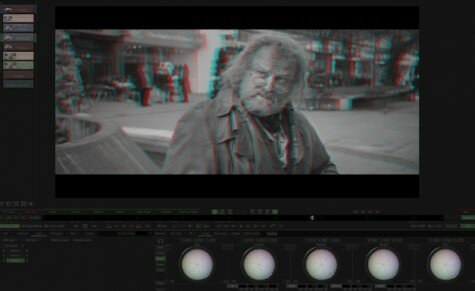BBC DOES promote its 3D shows

3D NEWS> 3D BROADCASTING
Five reasons the BBC can claim to promote its 3D output despite accusations of a ‘half-hearted’ approach.
During the FUTURE 3DTV: 4K, Glasses-Free and Beyond! session at the 3D Creative Summit, Andy Quested, Chief Technologist HD & 3D, BBC Technology, revealed that the viewing figures for BBC 3D output reduced every time a show was broadcast.
The BBC’s two year 3D trial ends this summer with the last 3D broadcast of the Wimbledon tennis championships and Quested said that, whilst the BBC was very excited when they started the trial, the ‘spike’ of 3D ratings got lower each time despite the growth in potential audiences.
3D Focus received a lot of feedback mainly along the lines that the reason for this is because the BBC does not promote its 3D programmes.
Typical comments were: "I would love to watch in 3D but very rarely find out about a programme until it is too late!" and “If you were to read all the comments on the blogs run by Andy Quested and Kim Shillinglaw you would see that the most usual comment was that the 3D programmes were woefully advertised, even at times just before transmission the voice-over would mention the HD transmission but omitted to tell us where the 3D version was to be broadcast.”
However, looking back, it appears the BBC has been equal in its promotion of 3D content as for its HD content.
1. Every BBC 3D programme has had a blog that's been pick up by Digital Spy, AVForum, 3DFocus etc
2. Every BBC 3D programme has been headlined in the press as a story not just a listing including the Daily Mail (even though they go on about the licence fee being wasted).
3. Every BBC 3D programme has been promoted on air with the 2D promos.
4. Every BBC 3D programme is advertised on air at the beginning and for live programmes and several times during. There was an in-show promotion of Striclty Come Dancing 3D and presenter very often promoted the 3D highlights of the Olympic Games nightly highlights show.
5. Still the viewing of 3D falls and if you add the rate of increase of 3D TVs sales – the % is plummeting.

3D Focus believes the reason for a reduction in 3D viewing, despite the growth in 3DTV sales, has not been a result of poor promotion, rather the type of shows that the BBC has made available in 3D. For example, watching the Olympic Games was not enhanced by 3D – it did not allow you to see who reached the finishing line in a clearer way for example. If anything, it was worst because of the reduction in resolution and the hassle of wearing glasses. However, the Opening Ceremony WAS enhanced by the 3D because it was designed to be a visual spectacular. Is there any benefit to watching the Queen’s speech in 3D? Was Mr Stink better in 3D? Who soon switched from the 3D coverage of Wimbledon back to 2D?
It is for these reasons that, 3D should always be used as a device to create visual spectacle in an almost theme park style way. Shows like Galapagos 3D are improved by 3D because they are very visual by their nature, but with the costs involved, it might be better to leave 3D production to private broadcasters like Sky. How can the BBC justify further spend when the ratings have declined for every new 3D show broadcast?
Disagree? Agree? Leave a comment below!
FREE WEEKLY 3D NEWS BULLETIN –



















